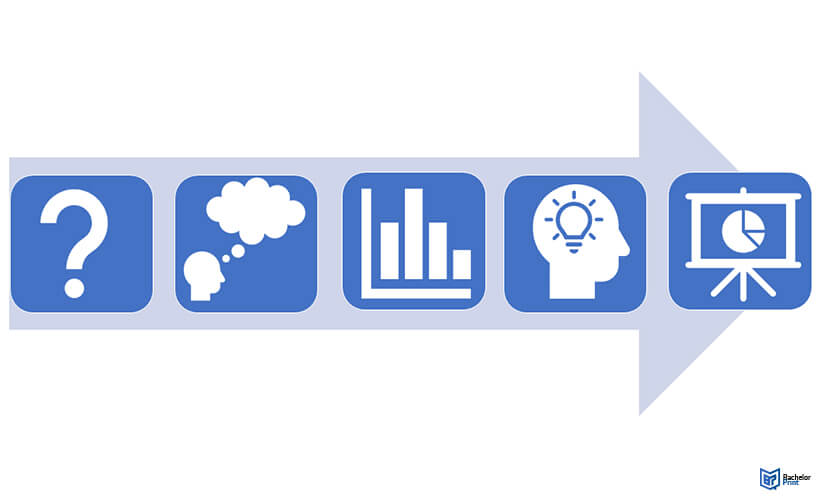
Explanatory research, a vital part of research methodology, is dedicated to providing a deep understanding of a phenomenon through the explanation of causal relationships among variables. Unlike exploratory research that seeks to generate new insights or ideas, explanatory research dives deeper to identify why and how certain situations occur. This methodology is often employed when there is a clear understanding of the problem but the reasons behind it remain obscure, thereby necessitating a comprehensive explanation.
Definition: Explanatory Research
Explanatory research is a study method that investigates the causes of a phenomenon when only limited data is presented. It can help you better grasp a topic, determine why a phenomenon is happening, and forecast future events.
This research can be described as a “cause and effect” model, researching previously unexplored patterns and trends in current data. Consequently, it is sometimes considered a sort of causal research.
The usage of explanatory research
Explanatory research investigates how or why something happens. Therefore, this type of research is one of the first steps in the research process, serving as a beginning point for future work. Your topic may have data, but the causal relationship you’re interested in may not.
This research helps evaluate patterns and generate hypotheses for future work. An explanatory study can help you comprehend a variable’s relationship. However, don’t expect conclusive outcomes.
Explanatory research questions
This research answers “why” and “how” inquiries, resulting in a better knowledge of a previously unsolved topic or clarification for relevant future research.
Explanatory research: Data collection
After deciding on your research subject, you have numerous alternatives for research and data collection methods.
The following are some of the most prevalent research methods:
- Literature reviews
- Interviews and focus groups
- Pilot studies
- Observations
- Experiments
Explanatory research: Data analysis
Ensure that your explanatory research is conducted appropriately and that your analysis is causal and not merely correlative.
Correlated variables are merely linked: when one changes, so does the other. There is no direct or indirect causal relationship.
Causation means independent variable changes cause dependent variable changes. The link between variables is direct.
The requirements for causal evidence are:
- Temporal: Cause must precede effect.
- Variation: Independent and dependent variable intervention must be systematic.
- Non-spurious: Be sure no mitigating factors or third hidden variables contradict your results.
The 5 Steps of explanatory research with examples
The data collection approach determines your explanatory research design. In most circumstances, you’ll utilize an experiment to test causality. The steps are illustrated in the following.

Step 1 of explanatory research: Research question
The initial stage in the research is familiarizing yourself with the topic of interest to formulate a research question.
Suppose you are interested in adult language retention rates.
Step 2 of explanatory research: Hypothesis
Next, set your expectations. In some circumstances, you can use relevant literature to build your hypothesis. In other cases, the topic isn’t well-studied; therefore, you must create your theory based on instincts or literature on distant themes.
Step 3 of explanatory research: Methodology and data collection
Next, choose your data collecting and data analysis methodologies and document them. After meticulously planning your research, you can begin data collection.
Step 4 of explanatory research: Analysis and results
After data collection, assess and report results.
Step 5 of explanatory research: Interpretation and recommendation
Try to explain unexpected results as you interpret them. In most circumstances, you’ll need to provide recommendations for future research.
Explanatory vs. exploratory research
Explanatory and exploratory research are often confused. Remember, exploratory research establishes the framework for explanatory research.
Many exploratory research inquiries begin with “what.” They are intended to guide future studies and typically lack definite conclusions. The research is frequently employed as the initial step in the research process to assist you in refining your study topic and ideas.
Explanatory research questions begin with “why” or “how.” They assist you in understanding why and how something happens.
Advantages vs. disadvantages
As with any other study methodology, this research involves trade-offs: while it offers a unique set of benefits, it also has major drawbacks.
| ✔ Advantages | ✘ Disadvantages |
| • It clarifies previous studies. It fills gaps in previous studies and explains why things happen. • Internal validity is high when done correctly, making it flexible and replicable. • This research is frequently cost- and time-effective because you can use secondary sources to guide your work before conducting more extensive studies |
• While explanatory research helps you solidify your thoughts and assumptions, it rarely yields conclusive results. • Results are often skewed or unacceptable to a greater body of study and are not externally valid. You'll need to undertake additional robust (typically quantitative) research to support explanatory research conclusions. • Coincidences can be mistaken for causal links, and determining cause and effect can be difficult. |
FAQs
An explanatory study investigates how or why something happens with limited information. It helps you understand a topic.
The explanatory research model is a quantitative strategy used to examine a hypothesis by gathering evidence that either supports or contradicts it.
Explanatory research aims to explain a phenomenon. Consequently, this form of research is frequently one of the initial steps of the research process, acting as a springboard for subsequent analysis.
